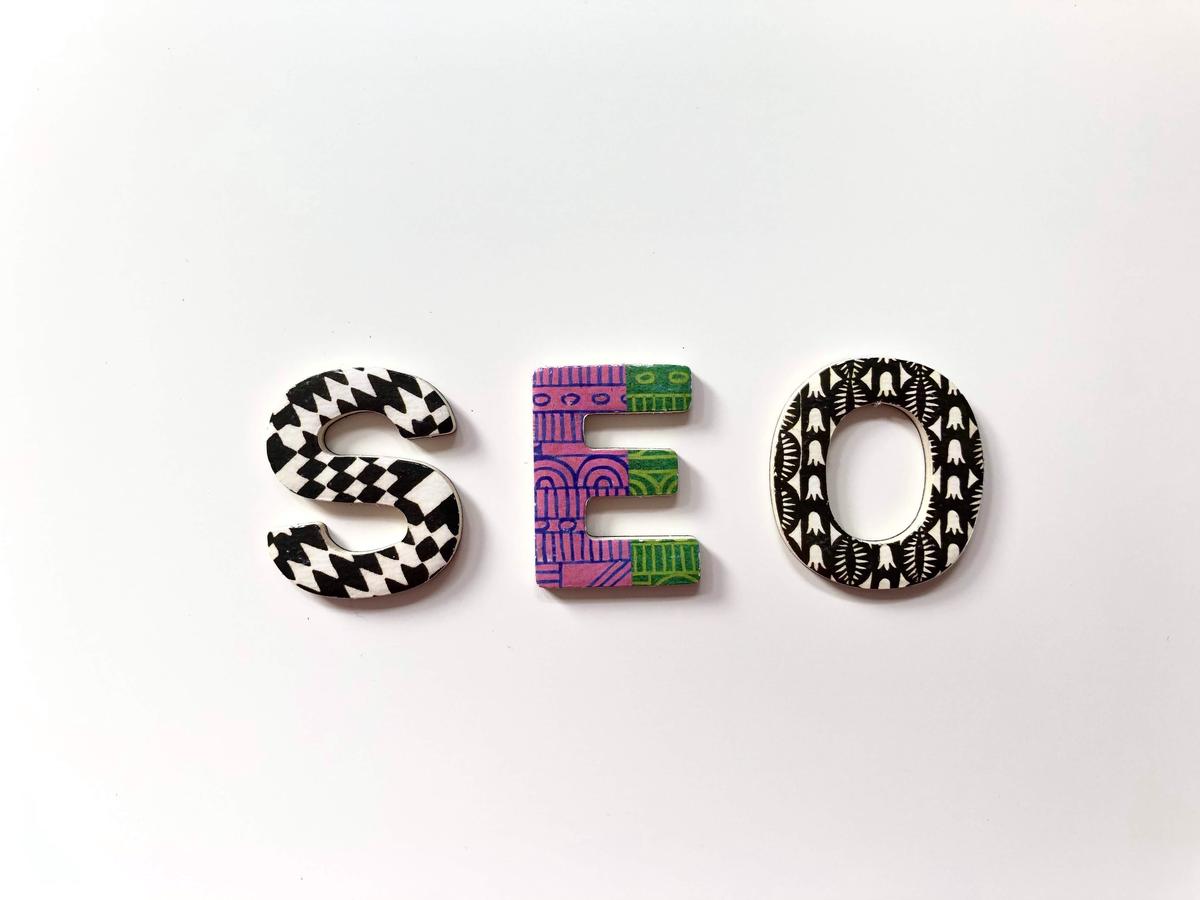In the stimulating world of digital marketing, one cannot ignore the astronomical impact of Search Engine Optimization (SEO) on content marketing strategies. Acquiring a clear understanding of how SEO works, not only aids in heightening your brand’s visibility but also empowers you by driving quality traffic to your website. This essay thrives to elucidate various SEO techniques like efficient keyword research, backlinking, and the effective use of local SEO, among other vital methodologies. Furthermore, we venture into the essence of infusing SEO goals with your content and the invaluable role of numerous SEO tools within content marketing. Finally, the implementation, monitoring, and successful adaptation of SEO strategies to align with predictive market trends are discussed.
Understanding SEO in Content Marketing
The days when mere content was enough to satisfy the marketing needs of a business are way in the rearview mirror. It’s a different game now, with a player’s sight firmly set on new rules, tighter competition, and an arena dominated by savvy, tech-driven giants. Central to this changing landscape is SEO (Search Engine Optimization.) Wondering just how central SEO is to the modern content marketing strategy? Let’s explore.
By design, content marketing is an art of persuasion, cleverly dressed in words, images, videos, or infographics. The objective, beyond doubt, is to engage and inspire action amongst a specific target demographic. However, without a sturdy SEO backbone, even the most beautifully crafted content risks drifting into the digital void.
SEO makes content findable and visible to search engines, transforming it from just being great and immaculate to effective and impactful. It’s the spark that lights up the darkness, the beacon that signals your presence across the vast digital universe. Picture content as a valuable product on a supermarket shelf; SEO is its eye-catching packaging, its strategic shelf location, and the intuitive aisle signs leading shoppers right to it.
In the dynamic world of web algorithms, SEO is the secret sauce, infusing the content with vital ingredients like relevant keywords, meta tags, optimized images, and strategically placed backlinks. This is how SEO influences your website’s ranking on Search Engine Result Pages (SERPs).
Bridging the gap between your business and your audience is all about creating content that doesn’t just inform or entertain but serves their needs and answers their queries. Here, SEO comes into the limelight. By harnessing the potential of SEO tools to comprehend user intent, predict trends, and analyze competitor strategies, businesses can produce tailored content that aligns with their target audience’s interests.
To ignore SEO in your content marketing strategy is akin to opening a shop in a ghost town. Unseen, unheard, unvisited. Yet, treat SEO like magic dust to sprinkle on your content, and voila! Your visibility multiplies, number of website visitors accelerates, and sales take a sharp upward turn.
Industries evolve, consumer behaviors shift, and market trends fluctuate. Yet, the importance of SEO in content marketing strategy continues to grow unabated. It’s no longer an add-on or a bonus, but rather, a fundamental pillar to a robust and result-oriented content marketing strategy.
The question today isn’t so much ‘how central is SEO to a content marketing strategy’ but ‘can a content marketing strategy withstand competition without SEO?’ The answer, frankly, is no. SEO isn’t just central to content marketing; it is its driving pulse, its navigational compass, and its path to potential success.

Photo by nisoncoprseo on Unsplash
Aligning your content with SEO Goals
Seizing the Fruits of Innovation: Aligning Content with SEO Goals
In the cutthroat world of digital marketing, the precise alignment of content goals with Search Engine Optimization (SEO) metrics stands paramount. This is not about blindly following trends but brilliantly crafting a tailored strategy that links the creative process of content marketing with the technical side of SEO.
Diving headfirst into the waves of content creation without a clearly defined SEO strategy is a recipe for disaster. Without proper alignment with SEO tactics, even the most compelling content may fail to make waves in the digital ocean, leaving businesses floundering.
Understanding your audience’s search behavior is fundamental to aligning your content strategy with SEO. This involves discovering what questions potential customers are asking, what terms they are using, and at which specific parts of their buyer’s journey. By integrating all these variables into the content planning process, brands can create data-driven content that not only captures audiences’ attention but also drives search engine rankings.
Keyword mapping, a critical tool for aligning content with SEO, cannot be underestimated. Fundamentally, it involves attributing target keywords to specific pieces of content, serving as an excellent guide in creating relevant and SEO-friendly content. Remember though, it’s not about keyword stuffing. This defunct method can land your content in the SEO graveyard. Instead, focus on crafting meaningful content that seamlessly integrates relevant keywords.
In this dynamic ecosystem, it’s important to keep up to date with the latest SEO trends while aligning them with your content marketing goals. From voice search optimization to leveraging artificial intelligence, exploring these trends can create exciting opportunities for content personalization, stronger consumer engagement, and enhanced brand visibility.
Link building is another golden ticket in aligning your content to SEO goals. Generating high-quality backlinks to your content helps to heighten your standing in the eyes of search engines, thus improving SERP rankings. But this isn’t a one-way street. Producing original, high-quality content also increases the chances that others will want to link back to you – a symbiotic relationship that rewards both parties.
In the grand scheme of digital marketing, the intertwining of content marketing and SEO forms a potent cocktail. When they are aligned, you elevate your content from a mere digital presence to a magnet for organic traffic and higher SERP rankings. Keep sight of this ultimate goal: creating value for your audience. This is the key to driving customer loyalty, brand awareness, and bottom-line growth.
Remember, SEO is an ever-evolving creature. Thus, maintaining a flexible, innovative, and forward-thinking approach to content creation is how you can stay a step ahead. So focus on the confluence of thoughtful creative strategies and solid SEO techniques, and watch your digital marketing efforts pay rich dividends.
short-name-of-a-.jpg-image-that-would-go-with-the-text-with-dashes-instead-of-spaces

SEO Tools for Content Marketing
Expanding on these areas, let’s explore what weapons you need in your SEO arsenal to level up your content marketing strategy. An understanding of these tools is key to making each piece of content a cog in the machine of a well-oiled, high-performing SEO strategy.
Google’s Keyword Planner, Ahrefs Keywords Explorer, and SEMRush are imperative for digging into your competitors’ keyword schemes. These platforms offer insights into understanding the type of content your audience engages with and the keywords they are using to find it—a crucial step in aligning your content with market preferences.
Tools like Adobe Spark and Canva offer user-friendly ways to create visually stimulating content. Oxygen graphics editor can assist in optimizing images for SEO, directly impacting the user experience and indirectly affecting your ranking on SERPs.
Content optimization tools such as Surfer and Clearscope allow you to analyze the relevance of your content against the top-ranking pages for your target keyword. Utilizing these tools ensures your content is not only useful but competitive.
Internal and external link-building are pivotal for SERP rankings. Tools like Ahrefs and Majestic SEO provide comprehensive backlink analysis, revealing new opportunities for strategic linking. By examining top-ranking pages for your keyword, you can determine what websites they’re linking to and incorporate a similar strategy.
Staying on top of evolving SEO trends couldn’t be more significant. Google’s algorithm updates frequently – tools like Moz’s Google Algorithm Change History log provide a retrospective view, helping you stay in the know and adapt your approach accordingly.
Social listening tools such as Brand24 and BuzzSumo allow the tracking of brand mentions and competitor analysis. These insights can direct content creation based on what’s trending and generating conversation in your niche.
Lastly, data is worthless without good analytics. Google Analytics and Data Studio, Tableau, and KPI dashboards like Databox offer granular insights into how your content is performing in terms of engagement, CTR, and conversions. This data can inform future strategy, adjusting for what works and eliminating what doesn’t.
Every entrepreneur worth their salt knows this – persistent experimentation and learning from failure lead to innovation. In the SEO world, there’s a tool out there to help magnify every success and learn from every stumble. In the challenging game of visibility and rankings, being equipped to innovate with agility, adaptability and foresight is simply non-negotiable. The dynamism of the digital landscape doesn’t allow for complacency – it commands constant evolution. Stay ready. The ride never ends. And neither should your zest to conquer the crest that is maximum visibility in the ever-crowded world of SERPs.

Implementation and Tracking of SEO
Integrating SEO into your content marketing strategy is no longer optional – it’s mandatory. As outlined above, both SEO and content marketing bring unique strengths to the table when it comes to digital marketing. The crucial challenge lies in effectively implementing and diligently tracking SEO within your content marketing strategy.
Keep an eye on SEO while coming up with your editorial calendar or planning your content strategy. Utilize keyword research tools like Google’s Keyword Planner, Ahrefs Keywords Explorer, or SEMRush to gain insights on trending keywords which can be incorporated into your content.
Prioritize aesthetic value along with SEO. Leverage tools like Adobe Spark and Canva to create captivating visuals to complement your well-researched content and embed the appropriate alt text for image optimization. Oxygen graphics editor is another efficient tool to optimize images for SEO, enhancing your website’s load time and user experience.
Tracking the relevance of content is equally important. Tools like Surfer and Clearscope come in handy for analyzing your content for relevance, understanding what works best, and tailoring your content to cater to consumer interest and search engine demands. Keep a continual tab on your backlinks, too. SEO tools such as Ahrefs and Majestic SEO are excellent in this regard, enabling you to track and improve your link-building efforts.
SEO is ever-evolving, and so should be your content strategy. Moz’s Google Algorithm Change History log is a brilliant resource to keep tabs on SEO trends and algorithm updates. Making use of social listening tools such as Brand24 and BuzzSumo can help you monitor brand mentions and performance, compare against competitors, and differentially strategize for better reach and engagement.
Analytics crucially bridge the gap between actions and results, helping you understand what works well and guiding strategy evolution. Tools such as Google Analytics, Data Studio, Tableau, or KPI dashboards like Databox are potent in evaluating content performance and engagement metrics.
Lastly, remember that no venture succeeds without a dash of experimentation and the courage to learn from failures. Even the most thought-out SEO strategy might initially stumble or not give the expected results. But don’t let that deter your stride. Success in content marketing, SEO, or any business venture, for that matter, lies in persistent experimentation, learning lessons from failures, and an unquenchable thirst for innovation. Leveraging technology, harnessing cutting-edge SEO tools, integrating them into your content strategy, and tracking results can help you stay ahead in the ever-evolving world of digital marketing. Aspiring entrepreneurs, get ready to conquer the digital world with your savvy and persistent SEO-infused content marketing!

Photo by nisoncoprseo on Unsplash
Predicting Trends and Innovating SEO Strategy
In an ever-dynamic digital world, businesses must constantly innovate to stay on top of the competitive mountain. The evolution of SEO in content marketing dictates a new innovative approach to keep businesses ahead. The fusion of content marketing and SEO requires not only a deep understanding of both areas but also an intense focus on leveraging the latest trends, tools, and technologies.
One essential practice is the integration of SEO into the content marketing strategy. Contrary to the traditional models where SEO was viewed as an independent entity, incorporating SEO into every stage of content creation has now become the industry standard. It allows for a simultaneous focus on quality content creation and optimal online visibility.
Content planning, if done accurately, pays significant dividends. Keyword research tools, like Google’s Keyword Planner, Ahrefs Keywords Explorer, and SEMRush, are essential in this process, providing insights into what the audience is searching. This way, the content produced is not only valuable but also relevant to user searches, optimizing the chances of attracting organic traffic to the website.
With the boom in visual content, prioritizing aesthetic value in content creation has become a non-negotiable element. Image optimization holds a critical ranking factor in search engines. Tools such as Adobe Spark and Canva which allow for the creation of captivating visual content, and Oxygen graphics editor for image optimization, are crucial in ensuring visual content accomplishes its SEO potential.
Surfer and Clearscope are excellent examples of SEO content optimization tools. They analyze the relevance of content, providing instrumental feedback on what works and what needs improvement. Consistent use of such tools makes the task of aligning content with SEO efforts significantly straightforward.
Backlinks continue to carry substantial weight in SEO. Companies that prioritize tracking their backlinks and link-building efforts are sure to reap the benefits. Ahrefs and Majestic SEO are powerful tools in link analysis and link building, promoting improved rankings in search engine results.
Keeping track of SEO trends and algorithm updates is vital. Tools like Moz’s Google Algorithm Change History log offer valuable monitoring opportunities, ensuring strategies are pivot-ready for any changes in SEO dynamics.
Utilizing social listening tools such as Brand24 and BuzzSumo provides insights into brand mentions and competitor activities. This awareness is gold in making data-driven decisions that impact SEO and content marketing strategies. On that note, Google Analytics, Data Studio, Tableau and KPI Dashboards offer an in-depth analysis of content performance and engagement metrics, underpinning the direction of future content and SEO strategies.
A pointer to note: Innovation often means daring to experiment and embracing the prospect of failure. Adapting an innovative and technologically forward approach in SEO strategy is an effective path to success in the digital space.
Whichever industry businesses operate in, persistence, and innovation, particularly in digital marketing, set the pace. The focus is on leveraging technology and state-of-the-art SEO tools in content strategy. Equipped with these innovative content marketing SEO tactics, any business can thrive in this high-stakes digital world, confidently blazing trails in their respective marketplaces.

The highly competitive and rapidly evolving digital marketing landscape necessitates a consistent learning and adapting approach when it comes to SEO strategies. By effectively analyzing market trends and innovatively altering your methods accordingly, your brand can maintain a strong competitive edge in its niche. Understanding SEO in depth, integrating it with your content marketing strategies, and utilizing the right SEO tools can catalyze success by driving quality traffic and generating leads. Additionally, the persistent tracking and refining of SEO implementations tremendously contribute to this success. Therefore, irrespective of the untapped changes that the digital marketing environment may unveil, a well-oriented SEO strategy remains a vital tool for thriving in content marketing.






